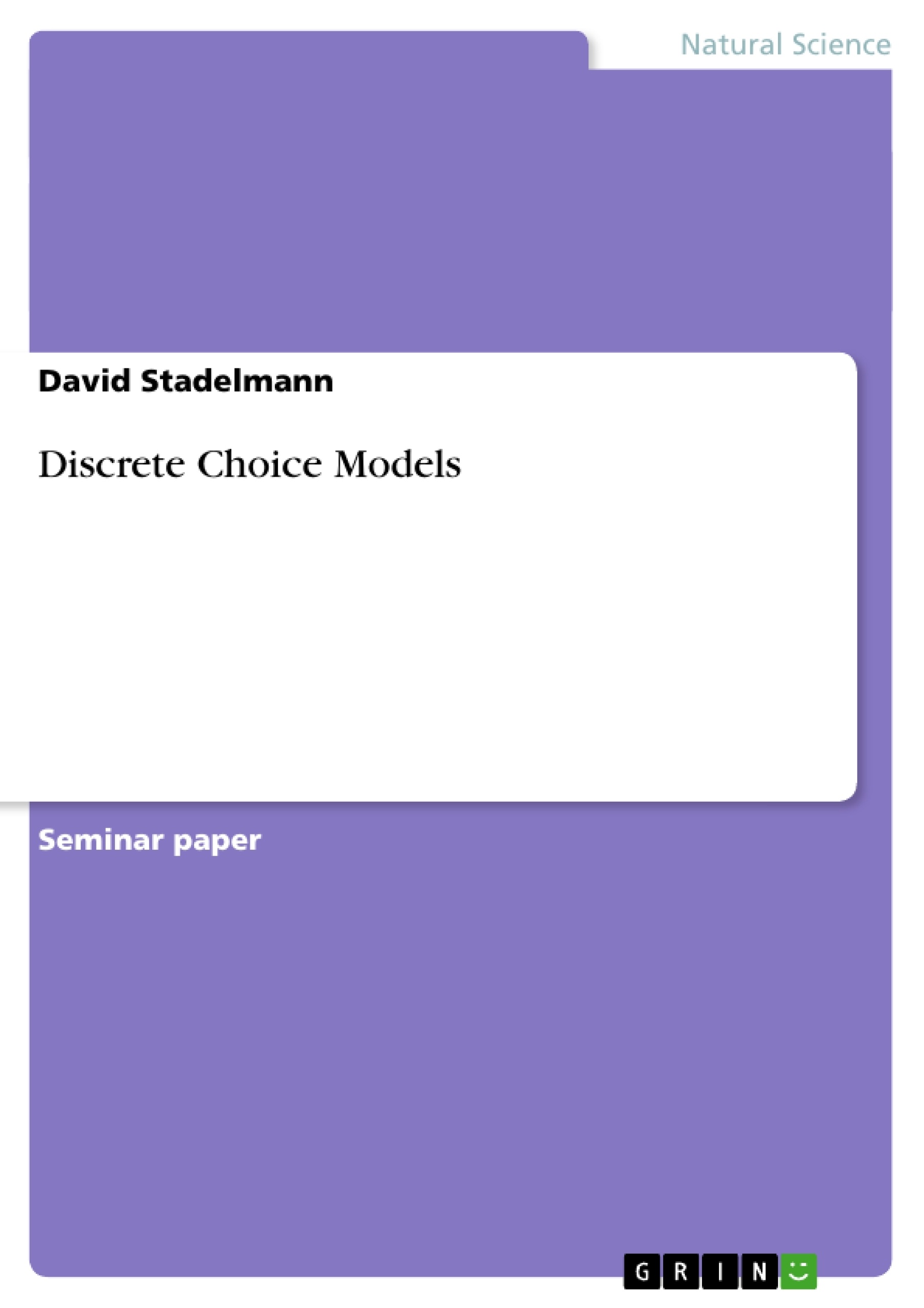Excerpt
Discrete Choice Models
by
David Stadelmann
May 29, 2007
Contents
1 Introduction 3
2 Model Speci?cation and History 4
2.1 Model Speci??cation 4
2.2 History 5
3 Estimation and Inference 7
3.1 Estimation 7
3.2 Hypothesis Tests 10
3.3 Measuring Goodness of Fit 11
4 Econometric Application 12
5 Concluding Remarks 13
Abstract
There are many settings in which the outcome we seek to model is a discrete choice among a set of alternatives. Almost non of these models can be consistently estimated with linear regression methods. Other methods have been devised for these cases such as the logistic regression model. This paper presents some basic principles of the logistic regression model and explains its estimation using the maximum likelihood method. An econometric application at the end highlights the importance of the theoretical issues discussed.
1 Introduction
The aim of any regression analysis is to identify and quantify the impact of one of several independent or exogenous explanatory variables on a dependent or endogenous variable. The general linear regression model [only in downloadfile]
with y 2 Rn, X 2 Rn p, 2 Rp is in many cases and under certain hypotheses a strong means to achieve this goal. Anyhow there are a large number of situations where the dependent variable is qualitative.
Consider, for example, modelling labor force participation, the decision of whether or not to make a major purchase, or the decision of which candidate to vote for in an election etc. For the ?rst of these examples factors like age, education, marital status, number of children would be relevant whether an individual chooses to actively seek work or not. But obviously, this choice di¤ers from models where the total amount of consumption, production costs, or movements of exchange rates are analysed. Here the dependent variables is an indicator of a discrete choice, such as yes or noor option 1, option 2 or option 3.
For such discrete choices other methods have been developed. One of these models are logit models for binary or multiple choices where there is a single decision among two or more alternatives (dependent variable).
Some examples of multiple-choice settings include the following:
1. McFadden (1974) and many others have analyzed the travel mode of urban com- muters.
2. Adriacono (2004) and Long (2004) have analyzed major choice in collegues among multiple alternatives.
In this paper we shall only focus on binary decisions using a logit model. The idea of how to extend such models for multiple decisions will be given in the conclusion. The remainder of this paper is organized as follows: In Section 2 we introduce some model speci?cations for the binary case and discuss briefely the history of the logit model itself. The estimation procedure is explained in section 3 which also outlines basic principles for hypotheses tests and a simple goodness of ?t statistic. Section 4 gives an econometric application using data of Formula 1 races in 2006 for the estimation of the deciding factors for success. Section 5 concludes with an intuitive extension of the binary logit model to a multiple choice model.
2 Model Speci?cation and History
2.1 Model Speci??cation
[...]
- Quote paper
- David Stadelmann (Author), 2007, Discrete Choice Models, Munich, GRIN Verlag, https://www.grin.com/document/74622
Publish now - it's free






















Comments